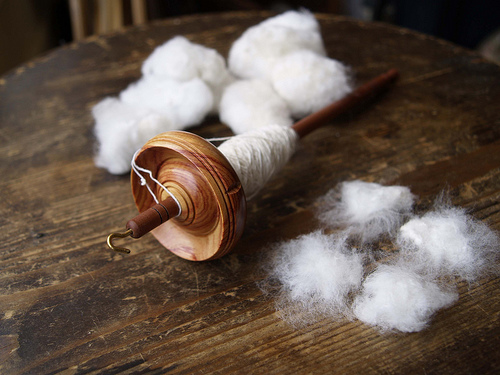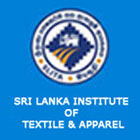FW
Gujarat will impose a five per cent value added tax on technical textiles. Technical textiles are used in industries including building construction, civil engineering, furniture, household textiles, floor coverings, automobiles, shipping, railways and packaging. The raw materials used in its manufacturing are artificial materials like plastic, nylon, resins, rubber and metal, meaning significant value addition for technical textile products.
The tax is estimated to increase the state’s tax revenue by about Rs 80 crores.
All other types of fabrics used for garments and domestic use will remain exempt from tax in the state. There is also a proposal to refund the tax paid on existing five per cent cotton roving tax to promote the use of the handwoven cloth, khadi, and eliminate the tax burden on the purchase of cotton roving used to manufacture khadi. This may reduce Gujarat’s tax revenue by about Rs 1 crores.
VAT is a multi-point destination based system of taxation, with tax being levied on value addition at each stage of transaction in the production or distribution chain. The term value addition implies an increase in the value of goods and services at each stage of production or transfer of goods and services. VAT is a tax on the final consumption of goods or services and is ultimately borne by the consumer.
East China Fair 2015 is being held from March 1 to 5. This caters to fashion, gifting, and home furnishing. The product range encompasses home textiles, fashion garments, home furnishing products, art deco gifts, and other consumer goods.
Within five days, the show is expecting 21,400 international business visitors and 14,000 Chinese. They are to engaging in developing strong trade relations with more than 3,441 exhibitors from 10 countries and regions including mainland China, Taiwan, Hong Kong, Japan, South Korea, Malaysia, Iran, Columbia, Nepal, western Samoa.
The East China fair is supported by the Ministry of Commerce of the People's Republic of China and co-sponsored by six provinces and three cities. The total exhibition area is of 115,000 sq. m. with 5,780 standard booths thereby allowing to showcase a variety of products on a large parameter. The fair is held yearly.
Companies taking part in the East China Fair are targeting the higher-end market. Although China can now offer upgraded products and the weakening yuan is in the interest of Chinese exporters, traders at the fair said that they are cautiously optimistic about the export outlook this year due to uncertainties in external demand.
Pakistan has set a target of 15.49 million cotton bales for the 2015-16 season. Punjab would produce 10.5 million bales from 2.43 million hectares, Sindh 4.4 million bales from 0.65 million hectares, Baluchistan 0.59 million bales from 0.043 million hectares and Khyber Pakhtunkhawa 0.00152 million bales from 0.0005 million hectares.
The new textile policy for 2014-19 emphasises on provision of higher quantity and quality of basic raw materials for producing high value products. It stresses on achieving goals through sectoral development and cotton is the first step. There is a provision for better prices for cotton producers.
The forthcoming cotton season would receive normal rainfall. However, low spell of rains are expected in April in the Punjab province. About 10 to 15 per cent more water will be available due to rapid melting of snow and glaciers due to rise in temperature. A higher quantity of certified seed would be available during the coming cotton crop season and seed companies selling fake seed would be de-registered.
Production may decrease due to lower prices last year and consumption may increase during the coming cotton season. Therefore the planning for intervention price may be done in time. Loans amounting to Rs 15 billion would be disbursed for the cotton sector.

The International Cotton Advisory Committee (ICAC) says at the end of 2014-15, world ending cotton stocks are projected to increase 11 per cent to nearly 22 million tons. After increasing substantially in each of the three previous seasons, China’s ending stocks are expected to remain stable reaching just over 12 million tons in 2014- 15, and would account for 56 per cent of total world stocks.
Outside China, ending stocks are forecast to increase for the second consecutive season from 7.5 million tons to 9.5 million tons, which is the largest volume of stocks in the last 35 years and is 60 per cent of the expected mill use in 2014-15. While the gap between production and consumption has declined since 2011-12, production is projected to exceed consumption by 2.1 million tons in 2014-15 with most of the excess being held by producing countries with exportable surpluses. If the similar situation continues, there could be a fall in global cotton prices.
Cotton production, China and others

Production in China is estimated to be down 7 per cent to 6.4 million tons. While production has also fallen, the volume has been sufficient to meet 80 to 90 per cent of demand, with China’s consumption declining over the last four seasons. However, most of the domestic production was absorbed by China’s national reserve, and spinners relied heavily on imports from other producing countries, allowing international cotton prices to remain elevated. In 2014-15, China ended its reserve policy and in 2015 announced that it was limiting imports to the volume required under its WTO obligations.
Turkey is the world’s third largest importer, but like China, imports are expected to decrease in 2014-15. Consumption in Turkey is forecast to fall 4 per cent to 1.3 million tons as mills equipped with old machinery are shut down and cotton’s market share further declines as a result of the price attractiveness of synthetic fibers. At the same time, demand for imports is forecast to decrease by 13 per cent to 761,000 tons due in part to an estimated 11 percent increase in domestic cotton lint production to 847,000 tons.
Despite a 4 per cent reduction in area this year and some losses from flooding, production in Pakistan is estimated up 11 per cent at 2.3 million tons given the 15 per cent increase in the average yield to 820 kg/ha. Imports by Pakistan are forecast to fall 9 per cent to 367,000 tons as the current season’s crop will meet most of its need with imports mostly consisting of longer staple cotton that is not available from domestic producers.
US exports marred by declining imports
The ICAC Report points out that as the world’s largest exporter, the United States is affected by the decline in China’s and Turkey’s imports, though demand for high quality machine-picked cotton will help to limit export losses. In 2014-15, production in the US is estimated at 3.5 million tons, up 25 per cent from 2013-14, and exports are forecast to increase modestly by 2 per cent to 2.3 million. As a result, ending stocks in the United States are likely to increase 58 per cent to just over one million tons.
India, the second largest exporter is projected to experience a significant decrease in exports this season, despite a high volume of production estimated at 6.8 million tons. Consumption is forecast to increase 4 per cent to 5.2 million tons while production remains stable, resulting in a smaller exportable surplus. Additionally, demand from China and Pakistan, two of its three largest buyers, has fallen. Ending stocks in India are expected to increase 40 percent to 2.4 million tons in 2014-15 after two seasons of contraction.
Two new initiatives have been launched in Nagaland to bolster apparel and textile growth in the Northeast region. An apparel and garment making center will come up in Dimapur, the largest city in Nagaland. Nagaland will also have a weavers’ service center. These steps build upon the ‘Make in India’ initiative, which works to promote the textile industry in the region.
The North East Region Textile Promotion Scheme (NERTPS) is an umbrella scheme for the development of several textile sectors including, silk, handlooms, handicrafts, and apparel and garments. The scheme is investing a total of Rs 1038.10 crores in the 12th Five Year plan. NERTPS will work towards construction of apparel and garment factories in the Northeast. Each state will have its own center with three units.
The main focus of the initiative will be on the construction of facilities, purchase of machinery and capacity building for the next three years. It is estimated that each center will generate 1,200 jobs.
The cotton industry in Nagaland is flourishing due to the abundance of cotton and skilled workers. The motifs and patterns that are woven on to the cloth have intricate designs. Textile dyeing is a significant art among the hill tribes of the region with each tribe possessing one or two good dyes.
South Korea's textile and clothing imports hit an all-time high in 2014, raising worries that the country could fall into a trade deficit soon in an industry that used to be a major growth engine for its economy. South Korea’s textiles and clothing imports were up 8.4 per cent from a year earlier.
Exports inched down 0.1 per cent on-year, narrowing the industry’s surplus to a record low, about half the amount from a year earlier. South Korea's trade surplus in textiles and clothing peaked in 1998, but has been on a decline ever since. Experts worry if this trend continues, the country could soon post a deficit in the sector. Exports of textiles and clothing are shrinking as many factories, beset by high production costs, are moving to China and Vietnam. Imports are growing, mostly driven by cheaper products from China.
Consequently, the trade deficit with China in the sector has been worsening. Last year, South Korea exported $2.52 billion worth textiles and clothing to China, while its imports from the country was $6.59 billion about 45 per cent of the total imports for the sector.
Mark Chubb is the new chief safety officer for the Alliance for Bangladesh Worker Safety. He will oversee fire safety operations and training in Bangladesh and guide remedies in all factories from where Alliance members source from. He will be based in Dhaka and is expected to bring world-class expertise to fire safety programs.
Chubb is a certified chief fire officer and fire service health and safety officer with more than 30 years of experience in fire safety and emergency management. A seasoned expert in emergency response, crisis management and the implementation of fire safety training and emergency management programs, he has held leadership roles in public safety, firefighting and emergency management across the United States and in New Zealand.
His role as an advisor will be critical to factories from which Alliance sources, as they ensure compliance with its standards. Alliance for Bangladesh Worker Safety is a group of 28 global apparel brands, with a five-year commitment, dedicated to improving safety in Bangladesh’s ready-made garment factories. The Alliance holds each member and its factories accountable to operating workplaces that ensure fire safety.
In partnership with the government of Bangladesh, trade unions and employers, Alliance helps implement reforms that improve worker safety throughout the Bangladesh garment industry.

Sri Lanka, has emerged as a major textile and apparel exporter. In its efforts to build a $1 billion textile and garment export industry, Sri Lanka has formed an institution with an objective to cater to the demands of garment manufacturers in the country. The body popularly known as ‘Sri Lanka Institute of Textile and Apparel’ (SLITA) has engaged in promoting Sri Lankan garments worldwide. As per Navaz Musthafa, Director General, SLITA, the idea behind the formation of the institute is the country’s efforts to regain GPS Plus status.
Empowering young Sri Lankans in fashion
“The SLITA has been established after merging the Institute of Textile Training and Service Centre and Clothing Industry Training Institute under the Parliament Act No. 12 in 2009. The newly carved out SLITA offers study programs complied based on the needs of students in Sri Lanka’s while keeping industry relevance. Under the new Act, SLITA works under the Ministry of Industry and Commerce. It is empowered to award diploma, degrees at UG and PG level,” says Musthafa. 
|
|
SLITA promotes its activities globally. “We want to give an opportunity to the Sri Lankan textile and apparel sector to be a part of our marketing campaign. SLITA supports Sri Lankan textile and apparel activities worldwide. It provides resource personnel to the textile and garment industry,” he explained.
The institute provides fast track and cutting edge education to professionals for managing the apparel industry in a competitive era. The institute has entered into a Memorandum of Understanding with leading industries such as North Carolina State University, Bunka Fashion College, Japan. The institutes mandate is to create technical and management professional who can understand the dynamics of global business environment for industry.
SLITA also maintains a data base of information relating to products, import and exports and other technical information relating to the textile and apparel industry.
Musthafa sums up, “Garment and textile is a very important sector in Sri Lanka. Our exports are worth more than $5 billion and we want increase it to $6 billion. We want to get back the GSP Plus tariff which we lost and want to reopen closed garment units in our country.”
The next edition of Texprocess will be held in Germany from May 4 to 7, 2015. Texprocess will provide an excellent showcase of current sustainable processing technologies. Texprocess is an innovative forum that pays tribute to an array of products and services that includes cutting room and automation technologies, design and product development services and solutions, embroidery technology, manufacturing preparation and setting, fusing services, knitting technology, internal material flow, product processing and finishing services, quality control and assessment. It is a leading fair for the textile processing and flexible materials industry and presents the latest technological advancements and developments.
The event will offer an excellent survey of the manifold international machinery suppliers and manufacturers. Seminars within the Texprocess forum will give special attention to a sustainable production. Some exhibitors will present special resource-saving products.
texprocess.messefrankfurt.com/
Las Vegas hosted Sourcing at Magic from February 16 to 19, 2015. There were more than 40 countries represented at the gargantuan show, where companies manufacturing everything from athletic wear to zippers were represented. Chinese exhibitors made up more than half the show.
This season, the focus was on Egypt and its 25 qualifying industrial zones, where apparel made in the zones get duty-free entry into the United States under a trade-preference program. One advantage is that input materials such as fabric and trim can come from anywhere, such as China or India, but at least 10.5 per cent direct input, such as packaging, zippers or thread, must come from Israel and 24.5 per cent direct input must come from Egypt. Duty-free entry can shave off up to 32 per cent in tariffs.
This trade-preference program was started in 2005 to promote peace between Israel and Egypt as well as to help the region grow its economy. On the exhibit floor, there were 30 Egyptian companies exhibiting, many for the first time. One of these was Lotus Garments, which makes blue jeans for brand names such as Levi’s, Jessica Simpson, Polo Ralph Lauren and Wrangler.
www.magiconline.com/sourcing-at-magic












